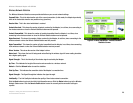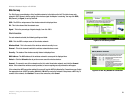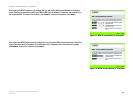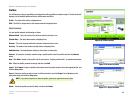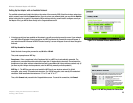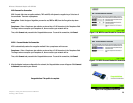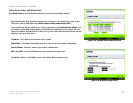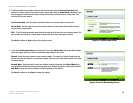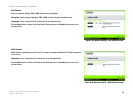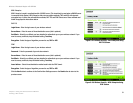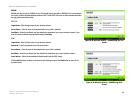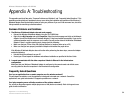
28
Chapter 5: Using the Wireless Network Monitor
Creating a New Profile
Wireless-G Notebook Adapter with SRX400
2. The Wireless Mode screen shows a choice of two wireless modes. Click the Infrastructure Mode radio
button if you want to connect to a wireless router or access point. Click the Ad-Hoc Mode radio button if you
want to connect to another wireless device directly without using a wireless router or access point. Then,
enter the SSID for your network.
Infrastructure Mode - Use this mode if you want to connect to a wireless router or access point.
Ad-Hoc Mode - Use this mode if you want to connect to another wireless device directly without using a
wireless router or access point.
SSID - This is the wireless network name that must be used for all the devices in your wireless network. It is
case-sensitive and should be a unique name to help prevent others from entering your network.
Click Next to continue or Back to return to the previous screen.
3. If you chose Infrastructure Mode, go to Step 4 now. If you chose Ad-Hoc Mode, the Ad-Hoc Mode Settings
screen will appear. Select your channel and network mode settings on this screen.
Channel - Select the correct channel for your wireless network. The channel you choose should match the
channel set on the other devices in your wireless network. If you are unsure about which channel to use, keep
the default setting.
Network Mode - Select the mode in which your wireless network will operate. Select Mixed Mode if you
want both Wireless-B and Wireless-G devices operating on the network, though at a slower speed. Select G-
Only Mode if you do not want any Wireless-B devices operating on the network.
Click Next to continue or click Back to change any settings.
Figure 5-22: Ad-Hoc Mode Settings Screen
Figure 5-21: Wireless Mode Screen



